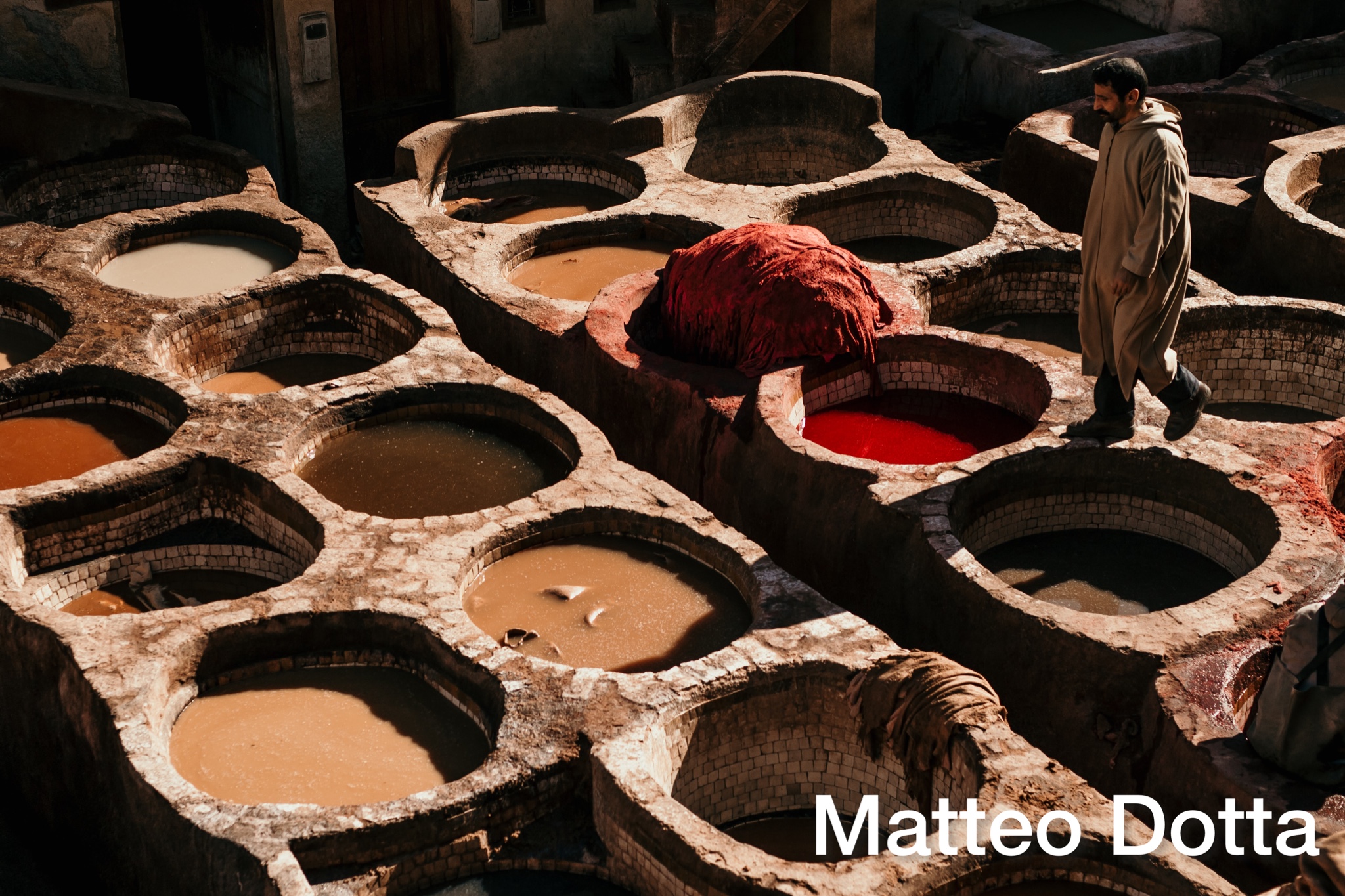As I explained in a previous article, sustainable leather has no defined characteristics.
It is known that it has a lower environmental impact but it is not written in some law, or somewhere, how much lower the environmental impact is or how it is reduced, and in this legal vacuum, many people give their interpretation.
To assess the sustainability of leather we need to look at more things and not only at the product itself, but also at the supplier, its attitude towards the environment, the laws to which it is subject, and the certifications.
It is true, the borders have not yet been drawn, but we can say that they are creating, almost automatically, a sort of increasingly shared guidelines that we could almost define unwritten rules.
The direction that many tanneries are taking is more or less the same and in other words, an alignment is forming, and certifications are an example.
WHAT IS A CERTIFICATION?
Certification means the act by which an independent third party declares with reasonable confidence that a particular product, process or service complies with specified requirements.
There are those who set the standard (UNI, ISO, CEN …) and there are those who certify, the third party, (ICEC, TUV …) next to these there is Leather Working Group (LWG).
It is a scientific tool that helps the buyer to better understand the tannery in front of him.
They are useful when you have no way to do an inspection, an audit yourself because you don’t have the time or the skills to do it.
It’s important to know which ones exist, the most common ones, and how they should be read.
I would like to add, however, that a tannery cannot be defined sustainable, or with a sustainable mentality, if it does not have some of the certifications I am about to tell you about.
As I said before, there are many elements to consider, for example, the laws to which the supplier is subject that, by defining minimum standards, make some certifications not indispensable, however, the latter certainly give an extra guarantee.
At the same time, the Leather Working Group audit, which I will discuss below, is also gaining more and more ground in recent years and sets unique standards worldwide.
However, it is not enough to have the LWG to say that we are sustainable.
LET’S SEE WHAT ARE THE MOST COMMON RULES THAT ARE CERTIFIED
It’s true that here begins a sort of list, but believe me that I have given my best to be as complete as possible and at the same time as concise as possible.
As I said before, the law is the first “certification”, and I will talk about it in one of the next articles, otherwise, this risks becoming the divine comedy.
Start with the ENVIRONMENTAL ones concerning air emissions, wastewater, sludge, waste, and resource consumption (electricity…).
The best known is the certification that attests to the UNI EN ISO 14001:2015 standard that refers to Environmental Management Systems.
It does not certify a particular environmental performance, nor does it demonstrate a particularly low environmental impact, but rather it demonstrates that the certified organization has an adequate management system to keep the environmental impacts of its activities under control, and systematically seeks improvement in a consistent, effective and above all sustainable way.
ISO 14001 is therefore not a product certification (like eco-labels), but a process certification.
Entry into the EMAS III Regulation: environmental declaration Reg. (EC) 1221/2009
A register for public and private organizations wishing to commit themselves to evaluate and improving their environmental performance.
This Regulation involves a process of collecting environmental data and communicating them to the outside world through the development of an Environmental Statement, validated by an accredited environmental verifier.
ECO FRIENDLY
Many people think that Eco-Leather is the faux one, but this is not the case and the UNI 11427 standard says it clearly.
This standard specifies the minimum product requirements and the minimum environmental requirements of the production process that must be met by leather in order to be called environmentally friendly.
This certification is applicable to every type of finished leather and for every destination of use, whose production is intended to be evaluated starting from raw leather from the beginning of the tanning production process to the finished leather, ready to be shipped for use in the manufacturing industry.
SOCIAL AND ETHICS
Then there is the SOCIAL AND ETHICALS referring to the protection of workers’ rights, health, and safety at work, involvement in social initiatives, industrial relations.
Here the Code of Conduct and Social Accountability for the Tanning Industry (UNIC Social Accountability) stands out.
It is a tool made available by UNIC (Italian Tanners Association) for the external dissemination of the principles that inspire the company’s activities, taking shape as the document in which the values of conduct and social responsibility that characterize the company are officially defined.
The same takes up the contents of SA8000, the most important international conventions (ILO) on the protection of workers’ rights, with particular regard to minors, as well as the main requirements on social responsibility, environmental and business ethics.
SA8000 Social Accountability: The SA (Social Accountability) 8000 standard, an international standard developed in 1997 by the American body SAI, contains nine social requirements aimed at increasing the competitive capacity of those organizations that voluntarily provide a guarantee of the ethicality of their production chain and production cycle.
FINANCIAL AND PRODUCT
Finally, we find the FINANCIAL AND PRODUCT SUSTAINABILITY traceability, animal welfare, origin (made in), Leather product safety and consumer protection
Many of us have already heard the UNI EN ISO 9001.
With its certification, the organization demonstrates to the customer that it is able to continuously provide products and services with a certain level of quality and that they meet the applicable legal and regulatory requirements, including their needs and expectations.
This means not only meeting these requirements in every product or service provided to each customer but also having the ability to anticipate customers’ future needs and offer products and services that will meet their needs.
Then there is UNI EN 16484.
Following the strong interest of tanneries in promoting the Italian character of their leather production, the European standard UNI EN 16484 “Leather – requirements for determining the origin of leather production” was published.
“MADE IN”
It is useful, for example, when the customer wants to ensure animal welfare or that the goods do not arrive from territories with environmental problems.
In order to the define leather as “Italian”, i.e. produced in Italy, at least the last substantial processing stage must be carried out in Italy, i.e. for the sale of finished leathers the country where the last retanning, dyeing (if present) and fatliquoring takes place determines the origin.
If all the production steps have taken place in the same country of origin, a 100% “Made in” can be issued.
So far I have told you about the most common certifications but if you want to know more about them just click on this link http://www.icec.it/it/certificazioni/sostenibilita-aziendale/sostenibilita-aziendale where ICEC makes an exhaustive list.
I want to add one last note, namely that if the tannery adopts at least one of the certifications for each area, ICEC issues the so-called company’s sustainability.
AND LWG?
Every nation has its own laws, and then there are certifications.
There are countries where the law is not so strict and therefore more certifications would be needed to reach the level of sustainability than those where the law plays an important role.
Leather Working Group solves this problem by setting a worldwide standard.
The Leather Working Group (LWG) is a not-for-profit membership organization for stakeholders across the leather supply chain. Since 2005, they have developed audit protocols designed to certify leather manufacturers according to their environmental compliance and performance capabilities.
LWG aims to promote sustainable business practices and create alignment on environmental priorities throughout its membership and the industry as a whole, placing a particular emphasis on a virtuous way of working, while at the same time providing guidelines for continuous improvement.
The LWG audit protocol essentially certifies the effort towards environmentally friendly production and systemic management of Quality, Environment, Safety and Ethics, as required by market needs.
It works like this: you become a member, the audit is done, and a medal is awarded depending on your score.
Afterward, LWG will perform a periodic audit to verify the maintenance of the standards, and in these cases, it can confirm, downgrade or even give a better medal.
When asked about the differences between the LWG protocol and ISOs, he replies: “LWG measures environmental performance and current data, whereas ISOs are related to system management, but do not quantify environmental performance”.
As of December 5, 2019. Within this total, India’s numbers jump out at you. LWG’s ranking is led by New Delhi with 123 tanneries evaluated. 80 are Gold (65%). The Chinese tanneries are 99: 81 Gold (almost 82%). There are 65 Brazilian tanneries, mostly Gold (56, equal to 86%)). Vietnam, which has only 14 tanneries under the LWG lens, can also boast 10 Gold (71.5%). And Italy? There are 55 Italian tanneries evaluated by LWG. Of these: 9 Gold (16.3%…), 14 Silver, 12 Bronze and 20 Audited.
Numbers that demonstrate how LWG’s protocol is a protocol that struggles to assess the real identity of the Italian tannery, failing to map and understand its actual, renowned and recognized excellence in process and product.
CONCLUSIONS
The sustainability of production processes today represents an important factor of competitiveness for companies and the tools, such as third party certifications issued by qualified independent bodies, capable of objectively attesting the performance of companies, are becoming increasingly important.
Whether you’re a maker or an end-user of leather carry goods, knowing that the leather was produced in a sustainable way with a focus on minimalizing environmental impact makes it that much more special, adding greater value to those leather goods on both a practical and emotional level.



